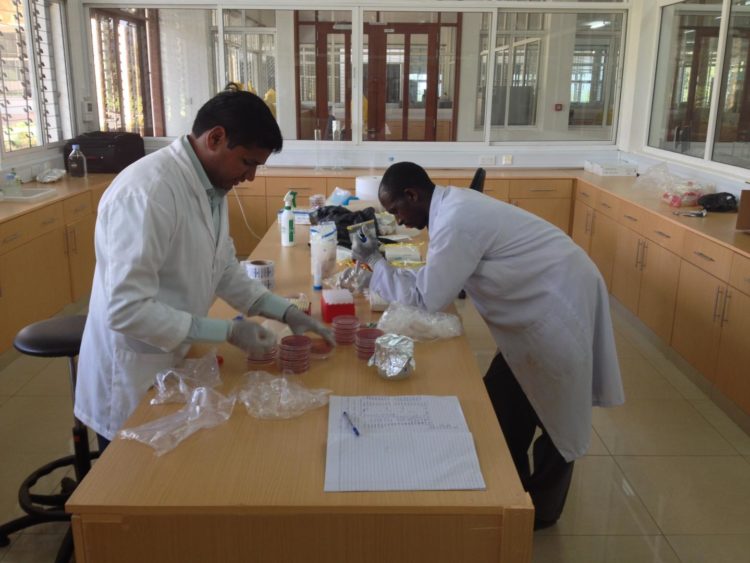
Credit: WSU
Antibiotic-resistant bacteria are prevalent in people, wildlife and the water in northeastern Tanzania, but it’s not antibiotic use alone driving resistance. Instead, researchers at Washington State University found transmission of bacteria in the environment is the most important factor.
These conclusions come from a four-year study led by researchers from WSU’s Paul G. Allen School for Global Animal Health. The results of the study were just published in Nature Communications.
“We were surprised to find these microbes everywhere,” said Douglas Call, a Regents professor and associate director for research at the Allen School, “but it appears that within impoverished communities, there are many opportunities for bacteria to spread between animals and people via contact with waste or through consumption of contaminated food and water.”
The study, funded by the National Science Foundation, began in March 2012 and involved visiting 425 households from 13 villages throughout northeastern Tanzania.
At each household, data was collected about people’s daily activities, after which researchers collected fecal samples from people, domestic livestock, chickens, dogs, and when present, wildlife. Water was also sampled.
The methods used by the team were unique from most studies, allowing collection and testing of more than 61,000 bacterial isolates. Depending on the community sampled, over 65% of bacteria from people were resistant to at least one of the nine antibiotics tested.
The prevalence of antibiotic-resistant bacteria was highest for people, but it was also high for other domestic animals even when those animals were never exposed to antibiotics.
For example, in some communities up to 50% of bacteria from dogs were antibiotic-resistant.
“In these communities, no one is treating their dog with antibiotics, and yet they have a high prevalence of resistance,” Call said. “It’s not an antibiotic use problem; they are coming into contact with antibiotic-resistant bacteria in the environment.”
Antibiotic-resistant bacteria were also prevalent in wildlife.
More than 50 percent of wildlife feces contained ampicillin-resistant bacteria, which was higher than the average across people, chickens, livestock, and dogs. The prevalence of resistance to the remaining eight antibiotics was highly correlated with results from domestic samples.
“We’ve got almost as much resistance on the wildlife side as the domestic side,” Call said. “This is one factor that shows how bacterial transmission plays such an important role in this system.”
Antibiotic-resistant bacteria were also prevalent in water sources.
The World Health Organization recognizes antibiotic resistance as a threat to global health and estimates 10 million deaths worldwide by 2050 if no effective interventions are made.
While antibiotic-resistant bacteria are prevalent throughout the study area, these findings are the first step to address potential health risks.
“Hygiene and sanitation have to figure more prominently in efforts to combat antibiotic resistance,” said Mark Caudell, a first-author of this work. Caudell, is a former WSU researcher and now the regional social science coordinator for antimicrobial-resistance at the Food and Agriculture Organization of the United Nations.
“Until hygiene and infrastructure improves, and transmission begins to decline, antibiotic stewardship alone is unlikely to have much impact,” he said.
###
Media Contact
Laura Lockard
[email protected]
206-861-6884
Original Source
https:/
Related Journal Article
http://dx.





